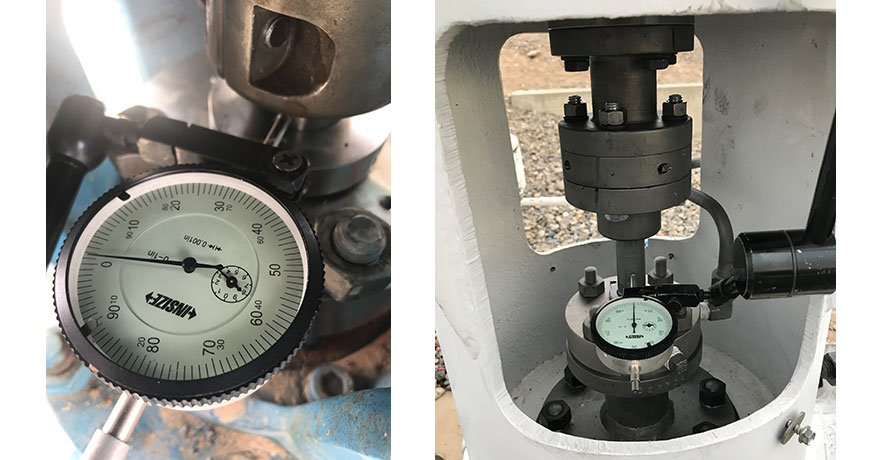Before precision alignment is to be performed on rotating equipment, best practice dictates that there are a few things that should be checked, even before doing rough alignment.
One of those things is checking coupling and/or shaft runout. Runout is a condition where the centerline of the coupling or shaft has deviated from its true axis of rotation. To measure coupling or shaft runout, it is common to use a dial indicator with a standard magnetic base. Simply mount the magnetic base on a stationary surface. Then mount the dial indicator on the surface to be checked. For example, if checking radial runout on the coupling, we would place the dial indicator on the outer diameter of the coupling. We proceed by rotating the shaft of the machine and observing the face of the dial, looking for movement of the needle. This might tell us that the coupling was not bored concentric to the shaft centerline. If excessive runout is found on the coupling, it is good practice to check runout on the shaft as well. If there is also excessive runout on the shaft, this could mean that the runout at the coupling could be due to a bent shaft. At this point, and depending on the severity of the shaft runout, the shaft of the rotating machine may need to be replaced.

In some instances, it is also a good practice to check the axial runout on the coupling. This means we would place the dial indicator on the outer face of the coupling hub and look for movement of the dial. Excessive runout, in this case, would mean that either the inner diameter of the coupling hub was not bored concentric to its true centerline, or the coupling hub was not installed properly onto the shaft (i.e. when a dead-blow hammer is used to mount the coupling hub). Essentially, the axial runout of the coupling suggests that the coupling hub has an angle, in comparison to the shaft. It is very likely that you will find runout on almost every rotating machine that you measure. However, just like for precision alignment, we have allowable tolerances for runout. Typically, the maximum allowable amount for runout is 0.002″ (2 mils or thou). In the case of a higher RPM machine (more than 3600 RPM), a tolerance of 0.001″ (1 mil or thou) should be used. Although some people have thought that checking runout is a waste of time, it certainly is not. It confirms that the coupling was manufactured and installed correctly and that the shaft is not bent.
Download our 5-Step Shaft Alignment Procedure – A simple and effective procedure for shaft alignment of rotating equipment
Related Blog: The Importance of Correcting Sheave Runout
Filed under:
Alignment by Adam Stredel CRL
